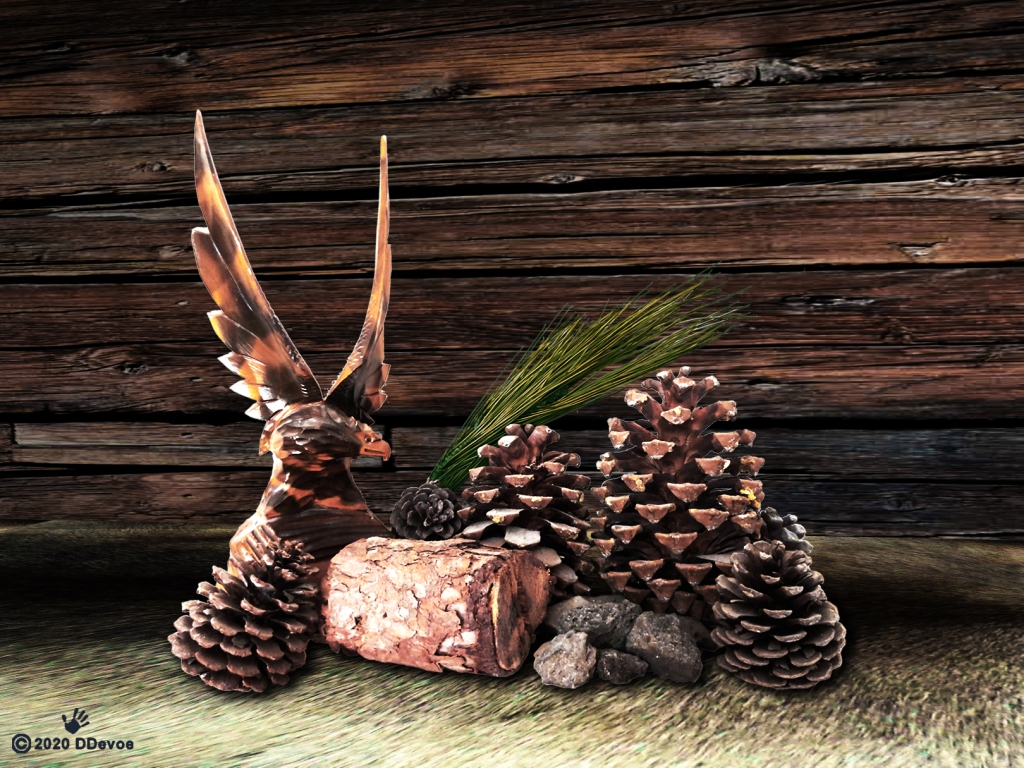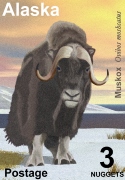I thought a digital rendering of a pine cone that I picked up in Ma’alot in northern Israel, would look nice with a quotation from naturalist John Muir. Muir was an early advocate of wilderness preservation in the United States, particularly in the west.
Click on image for full-size view.

Preaching of Pines
Where the slopes are covered with pine forests, the Galilee reminds me very much of the western parts of North American. Jews began planting pines in the 1930s to reforest lands damaged by neglect and overgrazing by goats when under Turkish rule. Pines were chosen, in part, due to the fact that most of the “olim,” Jewish immigrants, were from Europe and pines looked normal to them. Eventually, the pine forests came under criticism, referred to as pine tree deserts, monotonous and sterile. Many people wanted to see native species reintroduced. However, in recent years much of the criticism has died away. It seems the pines have promoted the rebuilding of the soil. Native undergrowth and tree species, as well as wildlife, are making a comeback. And I can attest that sometimes the smell of pine resin is just wonderful.
The cone pictured is from from one of those pines, an Aleppo Pine (Pinus halpensis), also known as the Jerusalem Pine, is the only species of wild pine that grows in Israel. It is commonly accepted that the tree now called “pine” is the Biblical “oil tree”, as mentioned in Isaiah XLI, 19:
“I will plant in the wilderness the cedar, the acacia tree, and the myrtle, and the oil tree…”
It is also mentioned in I Kings VI, 23:
“And inside the sanctuary he made two cherubs of oil wood, each ten cubits high.”
The oil tree is also mentioned verses 31 and 33 of the same chapter, as well as in Nechemia VIII, 15.
The oil tree features close to other impressive trees in the description of the vision of the redemption, in the blossoming of the desert and the arid land. In the Mishnah and other rabbinic literature, the oil tree is mentioned as a tree that was used for kindling the beacons that were lighted to announce a new month.
The pine, in its present name, is mentioned in the Bible just once, in the Book of Isaiah XLIV, 14:
“… and takes the cypress and the oak, which he strengthens for himself among the trees of the forest; he plants a pine, and the rain nourishes it.”
There is a mention of pine trees in the Mishnah in the context of the various trees which were used for burning the “red heifer”. There are also those who hold that pines were among the trees used for kindling the beacons to announce a new month.
Here is another view of the cone, superimposed on fallen needles.
Click on image for full-size view.

Pine Cone and Fallen Needles
The Aleppo pine blossoms and flowers in the spring. The male cones are shed after the flowering while the female cones develop into fruit. The cone stays closed on the tree until a heavy sharav [hamsin], when it opens and its seeds are scattered.
Several versions of these images are available on a wide variety of items at one of my Zazzle. stores. Search for “pine cone” or “muir.”


















